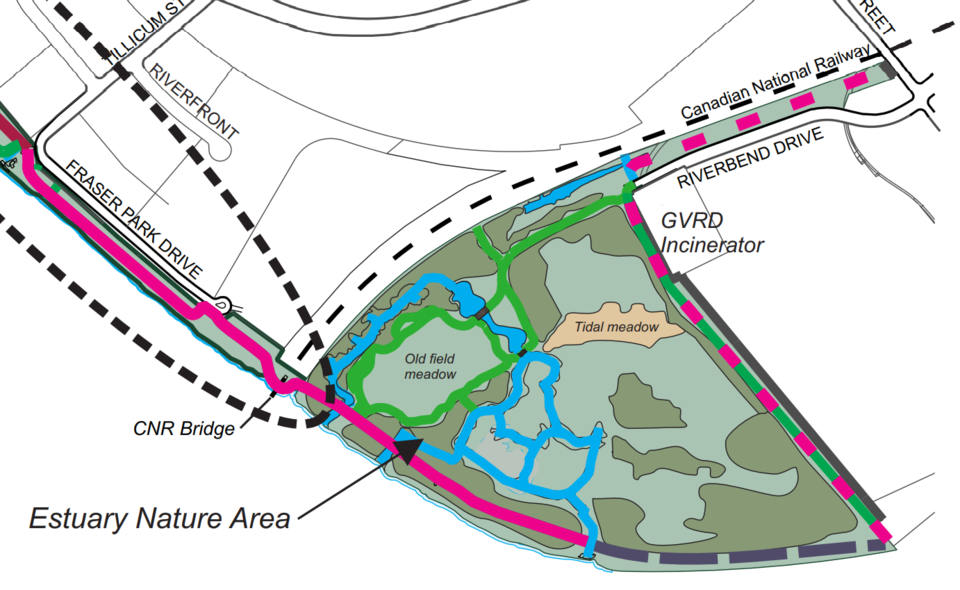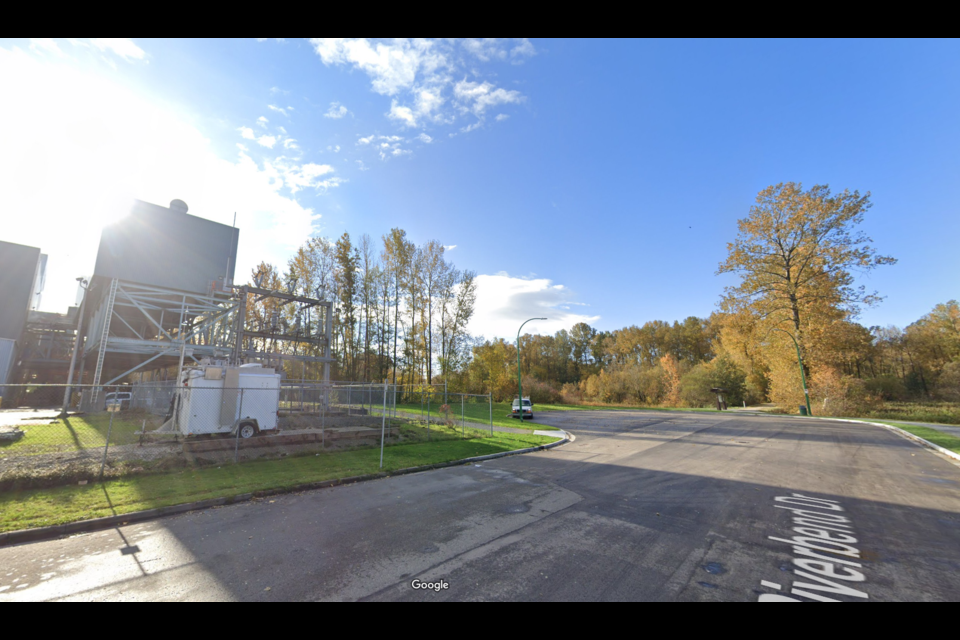Burnaby city hall watchers are questioning why the city has proposed putting a green waste facility on park land instead of a similarly-sized nearby plot of city-owned land it sold in 2021.
Burnaby resident Joel Gibbs said a 17-acre plot of land at 3990 Marine Way would have been a better option for the city’s Green Recycling Organic Waste (GROW) facility than the 21 acres proposed at Fraser Foreshore Park.
“I don’t think (the park land) is the best choice,” Gibbs said, “I think that Marine Way would be a dramatically better option because it’s not park land; it’s not by the river.”
But the Marine Way plot, about three kilometres away from the Fraser Foreshore site, was sold in 2021 to Larco Investments to develop a film studio.
Gibbs said he criticized that decision, since Mayor Mike Hurley had said in 2019 the city doesn’t believe in selling city-owned land.
“You never sell public land because you forever lose any sort of potential public benefit,” Gibbs said.
Fraser Foreshore originally called ‘core nature park’
Some environmentalists have also criticized the waste facility proposal for removing 20 acres of wetlands at Fraser Foreshore Park.
The same section of park was acquired by the city in 2004, when it was called “a core nature park of biologically diverse ecosystems.”
The acquisition was hailed as “an ecologically significant contribution to the legacy embodied in the public ownership of lands within the Burnaby Fraser Foreshore Park system,” in a staff report at the time.
One section of the land is classified as a tidal freshwater marsh, which the 2004 report called “a relatively rare habitat type in Burnaby and the surrounding region,” and noted that 75 per cent of the wetlands in the Lower Mainland had been lost since European settlement.
The wet grassland is a breeding habitat for birds including the Northern harrier and short-eared owl.

Still, the GROW plant is under consideration for its environmental benefits: it would have a processing capacity of 150,000 tonnes and would reduce the equivalent of 14,000 tonnes of carbon emissions, which is equal to taking 3,000 cars off the road, according to a city press release.
The city also plans to preserve other habitats around the city at a three-to-one ratio of what would be affected by the GROW facility to offset the environmental impact to Fraser Foreshore.
Burnaby has a climate goal to reduce its carbon emissions by 45 per cent by 2030 and be carbon neutral by 2050.
City considered Marine Way site
The city said it had considered the Marine Way property for the GROW facility.
“In the early stages, the city did look at the merits of this property,” said Burnaby spokesperson Chris Bryan in an email to the NOW.
But he said there were a number of reasons the city chose the Fraser Foreshore Park site for the GROW facility.
“We knew the Marine Way property had significant value in terms of developer interest and successfully capitalized on it,” Bryan said, noting the film studio is “expected to provide more than 1,000 well-paying jobs” and earned the city $136 million from the sale.
He also said the proximity to Metro Vancouver’s Waste-to-Energy Facility, which burns garbage waste and turns it into electricity, was also a factor in choosing the Fraser Foreshore site. The Waste-to-Energy Facility would be directly beside the proposed GROW facility.
“There are similar industrial activities such as trucks coming and going, and we see this area developing as a ‘Green Energy Centre’ with the District Energy Utility the city also plans to build there,” Bryan said.
Bryan added the size of the Marine Way property is smaller and has “significant riparian setbacks that would have prevented us from building a facility of the size envisioned.”
But Gibbs said he wasn’t satisfied with the answer.
“It’s all about developer interest and money. … With the amount of financial resources they (Burnaby) have, it doesn’t matter. … We don’t need to be tossing public land away when there’s a dire need for public land for a million other things.”





